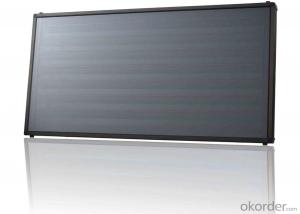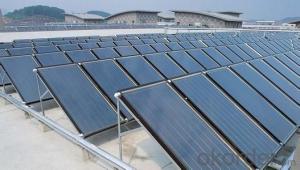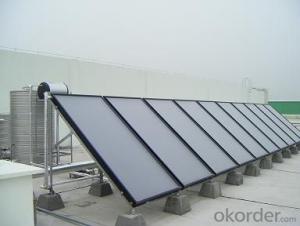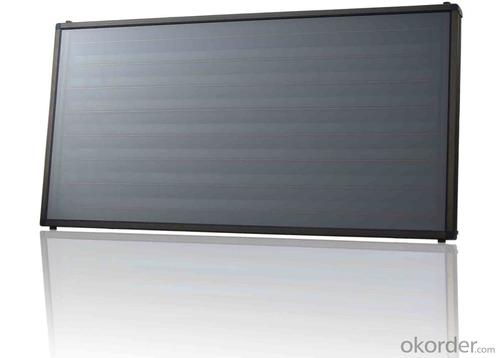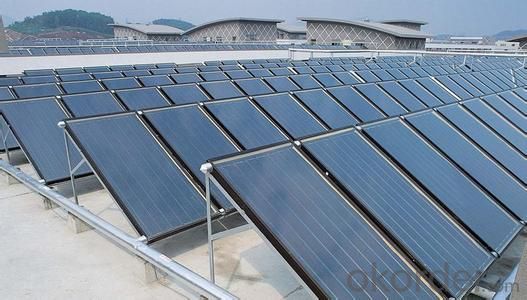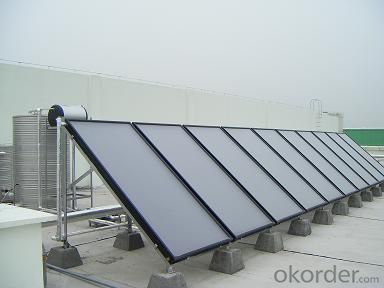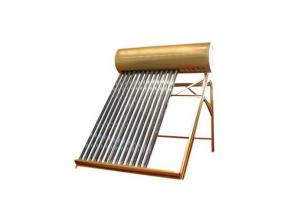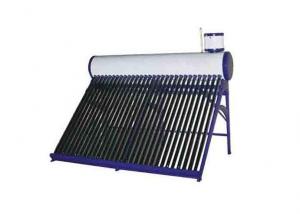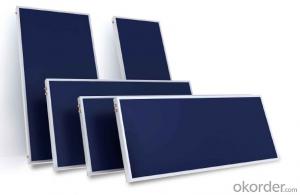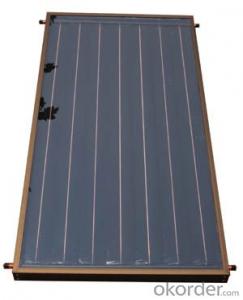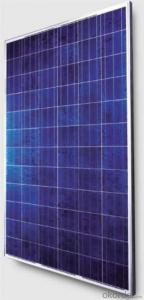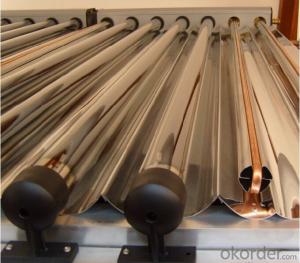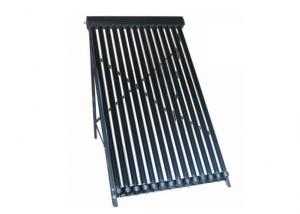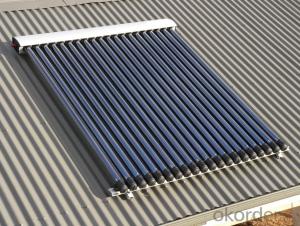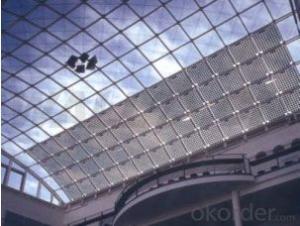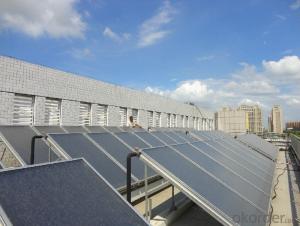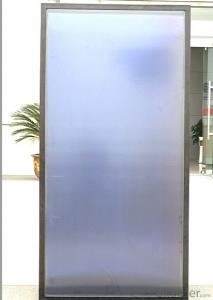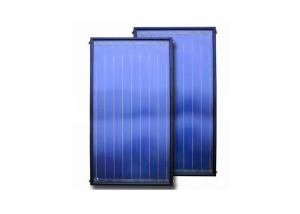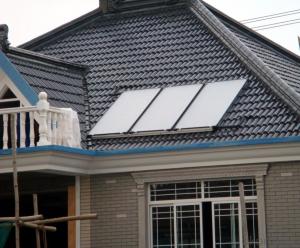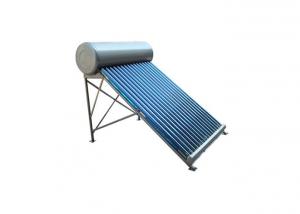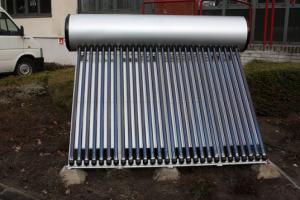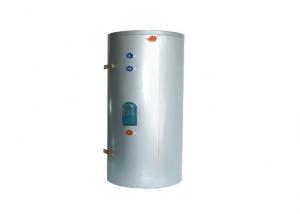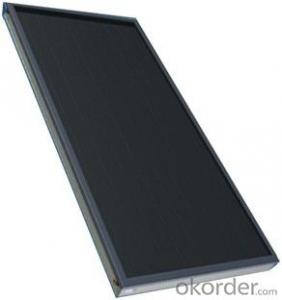Sunda Solar Collectors
- Loading Port:
- China Main Port
- Payment Terms:
- TT OR LC
- Min Order Qty:
- -
- Supply Capability:
- -
OKorder Service Pledge
OKorder Financial Service
You Might Also Like
solar flat plate collector
Type black-B
Dimension(LxWxH) (mm) 2000×1000×80
Gross area (m²) 2
Efficiency area (m²) 1.85
Gross weight of collector (kg) 29±3
Thermal efficiency(ηa0) 0.75
Stagnation temperature 180°C
Max.working pressure 1.2Mpa
Recommended circulation flow Water or propylene glycol
Resistance to freezing Less than or equal to 0°C
Transparent cover
Number of cover (pc) 1
Dimension LxW (mm) 1980x980
Cover material Low-iron tempered glass cover
Cover thickness (mm) 3.2
Absorber
Dimension LxW (mm) 1945*945
Material Cu & Al
Surface treatment Black chrome Coating
Absorptivity: 0.94±0.02
Emissivity: 0.09±0.02
Construction type aluminum sheet and Tube, Laser welding
Header material Copper Tp2
Header tube size (mm) Ø22x0.6x1060 2pcs
Riser material Copper Tp2
Riser tube size (mm) Ø8x0.45x1883 8pcs
Fill capacity 1.6L Including Header Pipes
Thermal insulation
Insulation material 16K Fiber glass insulation (back)
Insulation thickness 30mm (back) 25mm (side)
Conductivity(W/mK) Less than or equal to 0.042 under 75°C
Casing
Frame Aluminum Alloy
Frame Color Silver
Back Plate 0.5mm Aluminum back plate
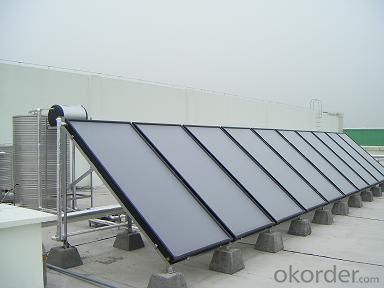
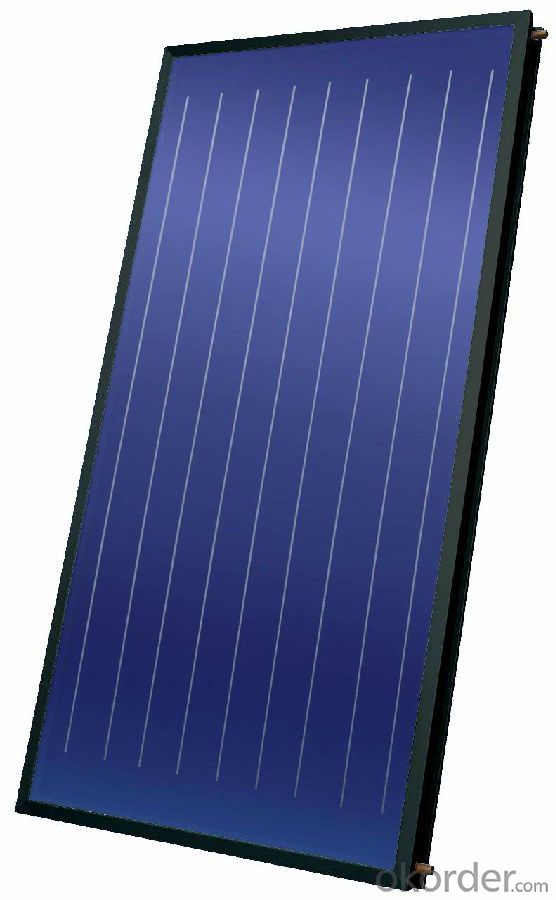
- Q: How do solar collectors perform in areas with high levels of airborne debris?
- Solar collectors may not perform optimally in areas with high levels of airborne debris. The debris, such as dust, leaves, or pollen, can accumulate on the surface of the collectors and block sunlight, reducing their efficiency. Regular cleaning and maintenance are essential to ensure the collectors continue to operate at their full potential in such areas.
- Q: Can solar collectors be used in earthquake-prone areas?
- Yes, solar collectors can be used in earthquake-prone areas. However, certain design considerations should be taken into account to ensure their safety and stability during seismic events. Anchoring systems, flexible connections, and reinforced support structures can be implemented to mitigate potential damage caused by earthquakes. Additionally, regular inspections and maintenance are crucial to ensure the continued functionality and safety of solar collectors in such areas.
- Q: What is the impact of temperature variations on the performance of solar collectors?
- Temperature variations can have a significant impact on the performance of solar collectors. Solar collectors are designed to absorb sunlight and convert it into usable energy, typically in the form of heat or electricity. The temperature of the collector itself, as well as the ambient temperature, can affect the efficiency and overall output of the system. One key factor affected by temperature variations is the thermal efficiency of the solar collector. As the temperature increases, the efficiency of the collector usually decreases. This is mainly due to the increase in thermal losses, such as conduction and radiation losses. Higher temperatures can result in increased heat transfer to the surroundings, reducing the amount of energy that can be captured and utilized. Another aspect impacted by temperature variations is the efficiency of the photovoltaic (PV) cells in solar collectors that generate electricity. PV cells typically have a negative temperature coefficient, meaning their efficiency decreases as the temperature rises. This is because higher temperatures can lead to an increase in electron excitation and leakage, reducing the electrical output of the cells. Therefore, temperature control and cooling mechanisms are often employed to maintain optimal operating conditions for PV cells. Furthermore, temperature variations can affect the overall lifespan and durability of solar collectors. Excessive heat can cause thermal stress and degradation of materials, leading to reduced performance and potential failures over time. On the other hand, extremely low temperatures can also impact the performance, as they can freeze the working fluid or cause damage to pipes and components. It is important to note that the impact of temperature variations on solar collector performance can be mitigated through proper design, insulation, and control systems. For instance, implementing insulation measures can minimize thermal losses, while temperature control systems can regulate the operating conditions within an optimal range. In conclusion, temperature variations play a crucial role in shaping the performance of solar collectors. The efficiency, output, and durability of solar collectors are influenced by the temperature of the collector itself and the ambient conditions. Understanding and effectively managing temperature variations are essential for maximizing the energy output and longevity of solar collector systems.
- Q: Can solar collectors be used in swimming pools?
- Yes, solar collectors can be used in swimming pools. Solar collectors, such as solar panels or solar thermal collectors, can effectively heat the pool water by harnessing the energy from the sun. This eco-friendly solution helps to reduce energy costs and extend the swimming season by providing a sustainable and efficient way to heat the pool water.
- Q: Can solar collectors be used to generate electricity for electric vehicle charging stations?
- Yes, solar collectors can be used to generate electricity for electric vehicle charging stations. Solar collectors, such as photovoltaic (PV) panels, are designed to convert sunlight directly into electricity. This electricity can be used to power electric vehicle charging stations, providing a clean and renewable energy source for charging electric vehicles. By utilizing solar energy, electric vehicle charging stations can reduce their dependence on traditional fossil fuels and contribute to a more sustainable and environmentally friendly transportation system. Additionally, solar energy can be stored in batteries or fed back into the grid, ensuring a constant and reliable power supply for charging stations, even during periods of low sunlight. Overall, integrating solar collectors into electric vehicle charging infrastructure is a practical and efficient way to promote the adoption of electric vehicles and reduce carbon emissions.
- Q: Can solar collectors be used in areas with limited financial resources?
- Yes, solar collectors can be used in areas with limited financial resources. Solar energy is a renewable and abundant resource that can be harnessed and used to generate electricity or heat without relying on expensive fuel sources. Additionally, there are various financing options available, such as government subsidies, grants, and microfinance initiatives, which can help make solar collectors more affordable and accessible to communities with limited financial resources.
- Q: Can solar collectors be used for drying lumber or wood products?
- Yes, solar collectors can be used for drying lumber or wood products. Solar collectors can provide a source of heat energy that can be used to dry wood by circulating warm air or using solar panels to convert sunlight into electricity for heating. This natural and sustainable method of drying lumber can be cost-effective and environmentally friendly.
- Q: Are solar collectors suitable for heating sports facilities?
- Yes, solar collectors are suitable for heating sports facilities. Solar collectors can effectively harness the sun's energy to generate heat, which can be used to warm up sports facilities. This renewable energy source can significantly reduce heating costs and carbon emissions associated with traditional heating systems. Additionally, solar collectors can be customized to meet the specific heating requirements of sports facilities, making them a viable and sustainable option for heating these spaces.
- Q: Can solar collectors be used for heating industrial facilities?
- Yes, solar collectors can be used for heating industrial facilities. Solar thermal systems, such as flat plate or evacuated tube collectors, can collect and convert sunlight into heat energy, which can then be used for various industrial processes. This can help reduce the dependency on fossil fuels and lower energy costs for industrial heating.
- Q: How do solar collectors perform in coastal areas with high salt content in the air?
- Solar collectors can still perform well in coastal areas with high salt content in the air, but they may require more frequent cleaning and maintenance due to the corrosive effects of salt. Regular rinsing and cleaning of the collectors can help prevent salt buildup and maintain their efficiency. Additionally, using corrosion-resistant materials and coatings can enhance their durability and longevity in such environments.
Send your message to us
Sunda Solar Collectors
- Loading Port:
- China Main Port
- Payment Terms:
- TT OR LC
- Min Order Qty:
- -
- Supply Capability:
- -
OKorder Service Pledge
OKorder Financial Service
Similar products
Hot products
Hot Searches
